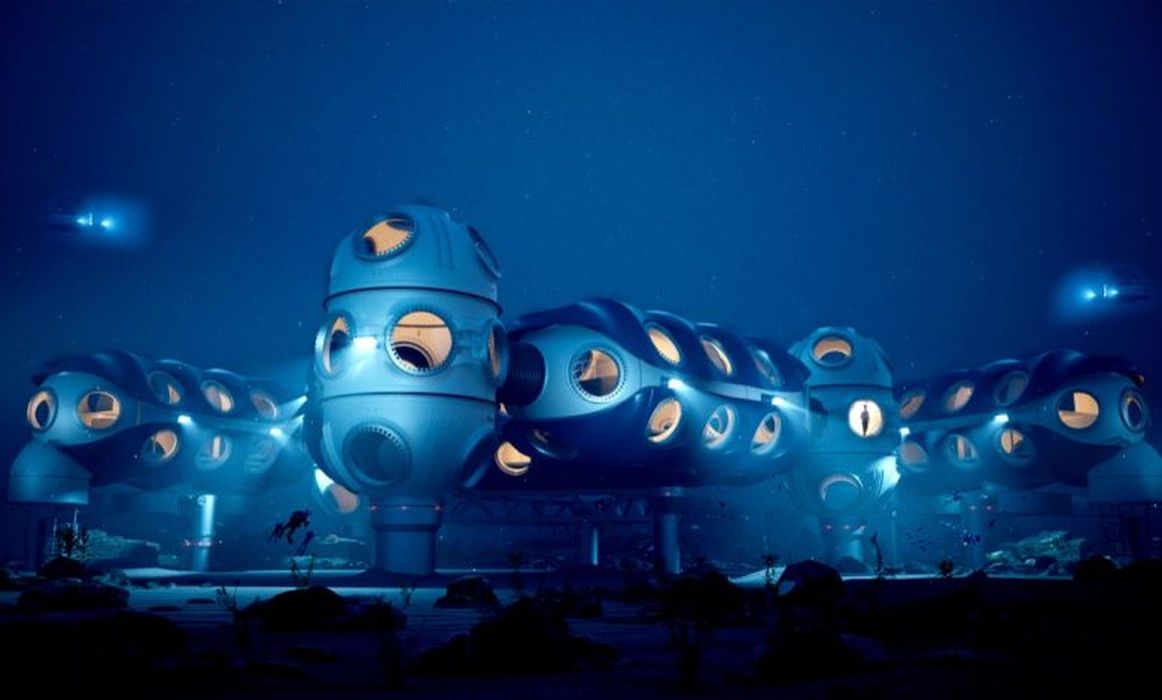
The Sentinel will be globally classed by DNV as the first additively manufactured pressure hulls for human occupancy.
DEEP is emerging from stealth with the project of a subsea station that will revolutionize access to and understanding of our planet’s oceans. Scalable, modular, and autonomous, the DEEP Sentinel system will be built using primarily WAAM metal 3D printing technology.
It has been designed for deployments up to 200m below the surface. This radically opens up access to the world’s continental shelves and the entirety of the Epipelagic Zone (sunlight zone), home to over 90% of marine life. To study, understand, and preserve Earth’s most important biome we must first be able to access it, and DEEP exists to develop technology for exactly that purpose.
Steve Etherton, President, EMEA of DEEP, said: “We need to preserve the oceans. To do that we need to understand them. The oceans sit at the center of many of the generational challenges the world is facing, and they also offer opportunities we have not even begun to comprehend. They are the source of at least every other breath we take. They influence the weather. They influence the climate. They influence us. Yet, this life-sustaining ecosystem remains surprisingly unknown. Through our innovative technology, DEEP will enable scientists to operate at depth for extended periods of time and we hope, in some small way, will contribute to our understanding of this life-giving environment”.
The DEEP System comprises Sentinel the underwater habitat, and a revolutionary range of submersibles, dive and scientific research equipment. All backed up by technical and human performance training and qualification programs (DEEP Institute), and a unique underwater R&D test and operations facility (DEEP Campus).
World’s First 3D Printed Pressure Hulls for Humans
The Sentinel will be globally classed by DNV, the world’s leading classification society for underwater technology and will allow scientists to live underwater at depths of up to 200 metres for up to 28 days at a time. This will give extended access to most of the world’s continental shelves and importantly being able to descend to 200 meters allows access to the entirety of the Epipelagic, or “sunlight”, zone.
The lower limit of the Epipelagic zone is the deepest point at which sunlight penetrates into the ocean and it’s estimated that 90% of marine life is found in this zone. Being able to comprehensively explore the full extent of this part of the ocean rather than just performing incursions from the surface, will represent a step-change in the way scientists can observe, monitor, and understand the oceans.
Following two years of intensive and pioneering research into innovative manufacturing processes and materials science, DEEP is at the advanced stage of technical design and has commenced production.
The DEEP system offers a radically more effective way to live and operate underwater than has existed before. Previously, underwater facilities have been temporary and fixed-location. DEEP’s habitat is modular, scalable, autonomous, recoverable, re-configurable and re-deployable.
Read the rest of this story at VoxelMatters
